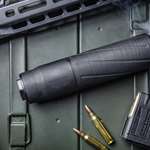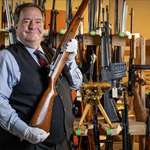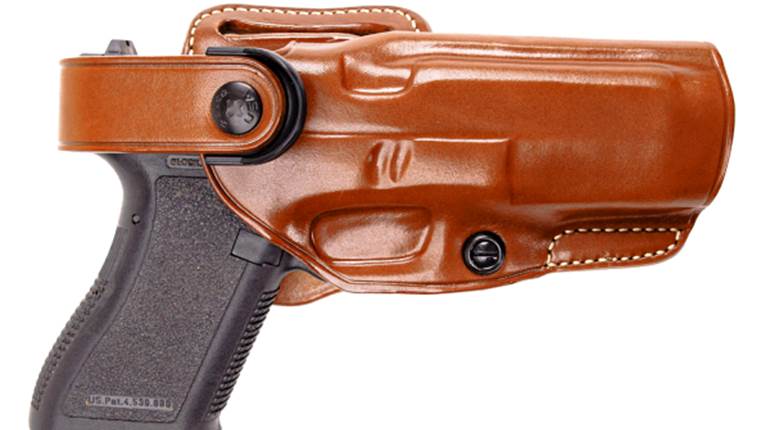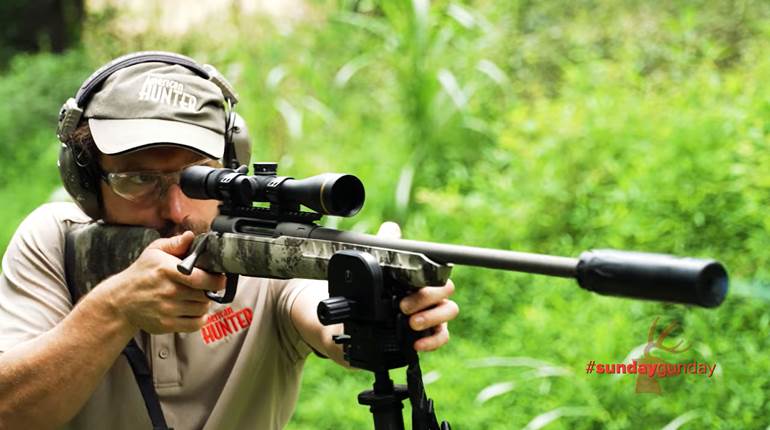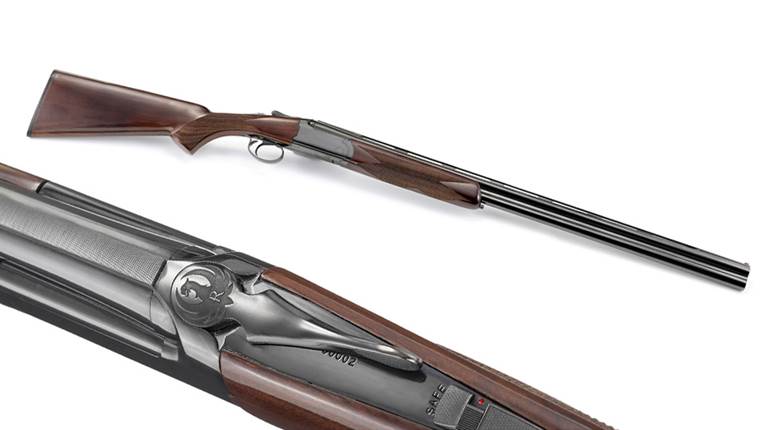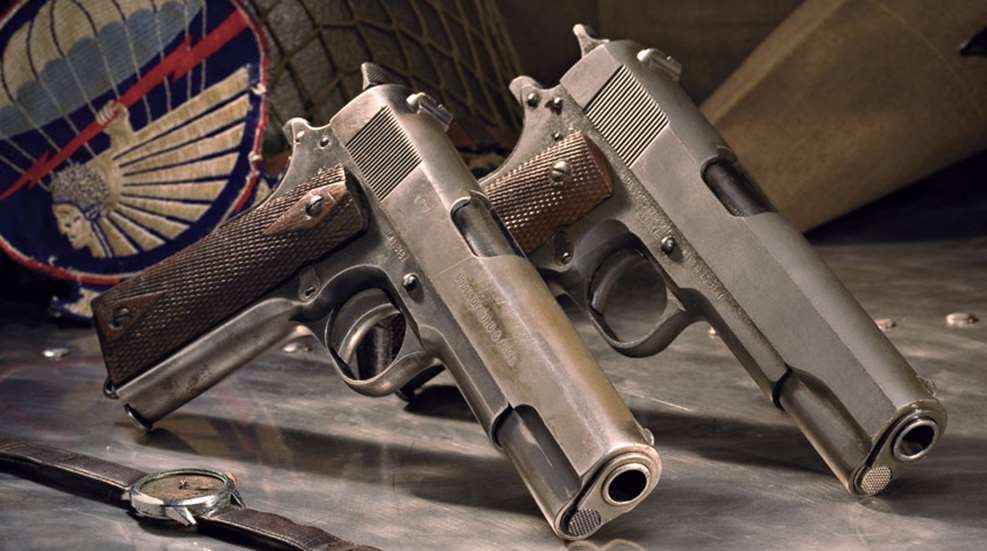
This Springfield Armory U.S. M1911 pistol was issued to PFC Jack Agnew of the 101st Airborne Division. Next to it is a Colt-made World War II M1911A1. The items shown with the guns belong to S/Sgt. Ray Geddes, also of the 101st, who appeared on the “American Rifleman Television” eight-part series on D-Day+75 Years.
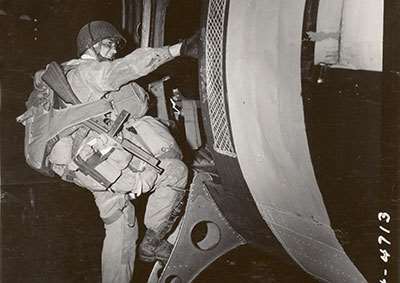
Three airborne divisions participated in the Normandy invasion. Numbering almost 20,000 men overall, they would secure the flanks of the invasion area—with the British 6th Airborne Division on the eastern flank near the estuary of the Orne River and the American 82nd and 101st in the west near the mouth of the River Douve. The operation to move these divisions from their embarkation airfields in England to Normandy was called “Neptune,” and, based on metrics of scale and complexity, nothing to rival it had ever been attempted previously. They would enter occupied France by parachute, glider and seaborne echelon for their rendezvous with destiny, and there they would create a legacy in the drop zones, landing zones and hedgerows. Through all of it though, the guns of Neptune served Allied airborne forces in unsurprising examples as well as some you might not expect.
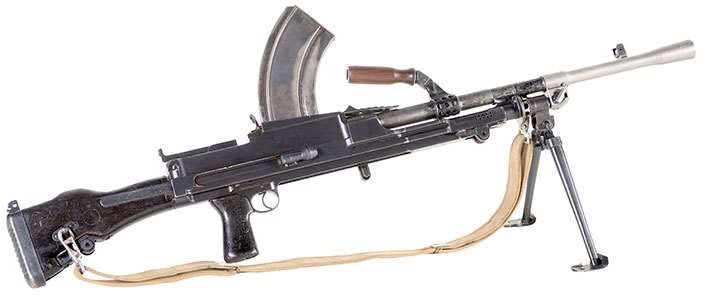
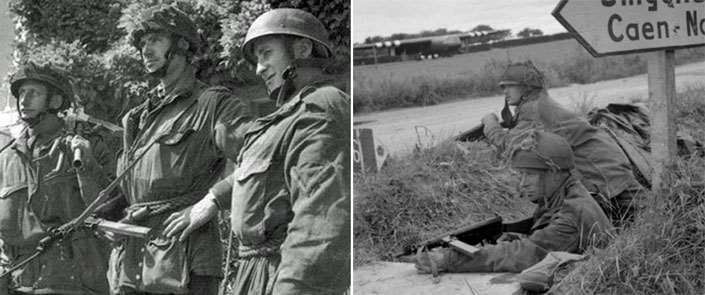
The Guns Of Deadstick
The first combat experienced by Allied forces on Tuesday, June 6, 1944, took place 15 minutes after midnight between the villages of Benouville and Ranville. The reason that spot became important before dawn on D-Day is because of the road running between the two villages—a road crossing bridges over the Orne River and the Caen Canal. The two bridges would provide a means by which forces advancing inland from Sword Beach, just three-and-a-half miles away, could circulate eastward across the canal and the river to protect the invasion’s left flank and open a corridor to relieve and resupply airborne forces located on the other side. Codenamed “Operation Deadstick,” the coup de main was commanded by Maj. John Howard of D Company, 2nd Battalion of the Oxfordshire and Buckinghamshire Light Infantry, and would involve landing six Airspeed Horsa gliders on the strip of land between the river and the canal so that the assault force could seize both bridges intact. In one of the most incredible feats of flying of the entire war, Maj. Howard’s glider came to rest just 230 ft. from the eastern end of the canal bridge, which is when the Ox and Bucks went to work. A 28-year-old lieutenant named Den Brotheridge led the first group of men onto the bridge with a light machine gun section armed with the .303-cal. Bren gun. Armed with a Sten Mk V 9 mm Luger submachine gun, Brotheridge was crossing the center of the span when he was struck down by enemy gunfire. He is typically recognized as being the first Allied casualty of the Normandy invasion. Although his life was lost, the Ox and Bucks captured the bridge intact by 12:20 a.m., and, in so doing, laid a critical piece of the foundation for the success of June 6. To this day, the bridge where Den Brotheridge died—the bridge over the Caen Canal—is known as Pegasus Bridge in honor of the winged horse depicted on the 6th Airborne Division’s shoulder patch.


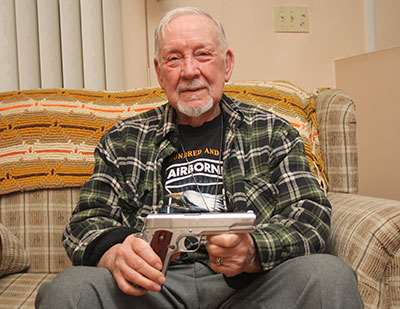
The Guns Of Mission Albany
Fifty miles away to the west, pathfinders from the 101st Airborne Division began coming down at about the same time as the Ox and Buck’s attack on Pegasus Bridge. The division’s D-Day mission, codenamed “Albany,” sent 6,928 paratroopers into a series of drop zones just inland from Utah Beach. These men carried the standard variety of infantry small arms that you would expect U.S. troops to be carrying in mid-1944: the M1 rifle and the Thompson submachine gun. But the Thompson was not the only .45-cal. submachine gun arming U.S. paratroopers in Normandy. In its combat debut, the M3 “grease gun,” manufactured by the Guide Lamp Division of General Motors, joined the fight to liberate France. Although it might not have been there in large numbers, the M3 nevertheless was used in the battle of Normandy and demonstrated itself to be not just reliable, but also ideal for airborne operations because of its compactness.

Scores of 101st paratroopers who jumped on D-Day carried what might be considered John Browning’s greatest design: the M1911 and later M1911A1 pistol. Officers, NCOs, machine gunners and radio operators, but not privates, were authorized to carry it. The Normandy invasion would be the first combat for a 19-year-old private from Detroit, Mich., named Donald R. Burgett. He was a rifleman in A Company of the 506th Parachute Infantry Regiment, and he was told that having a pistol could be a lifesaver in an airborne operation. The only problem was that Pvt. Burgett was not authorized to be issued one, so he wrote his father, a Detroit police officer. He asked him to find a pistol—preferably a .45—and send it to him so that he could be appropriately armed for war. Like any good father would, Officer Burgett tracked down a Colt’s Model of 1911 .45 ACP semi-automatic that had belonged to a World War I veteran. The fact that the previous owner had the pistol nickel-plated did not stop Burgett’s father from buying it and sending it to his son in a box concealed beneath a date nut cake. When Pvt. Burgett landed in France during the pre-dawn hours of Tuesday, June 6, 1944, the first thing he did was cock the hammer of that Model of 1911. That pistol was his constant companion during the hours that followed as he attempted to move through a labyrinth of the Norman hedgerows. Although he carried an M1 rifle as his main arm, that Colt .45 was at his side throughout this, his first campaign. He even managed to hang onto it after being seriously wounded in a bayonet charge on June 13, 1944, at a place known as “Bloody Gulch.” After he recovered from his wounds, Burgett carried the M1911 in combat in the Netherlands, Belgium and Germany.
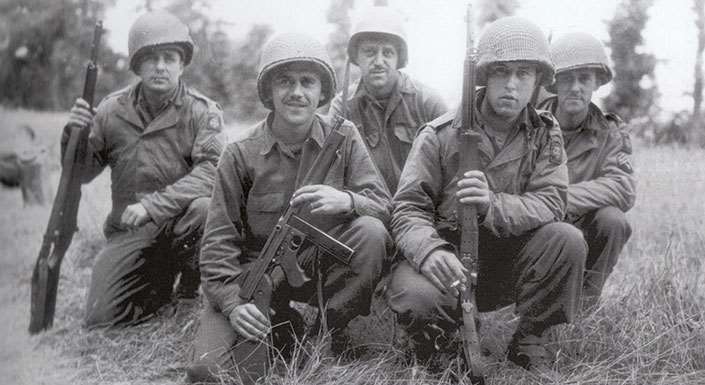
Another Screaming Eagle who carried John Browning’s M1911 into battle on June 6, 1944, was the man who commanded the 3rd Battalion of the 502nd Parachute Infantry Regiment, Lt. Col. Robert Cole. He lead the battalion from the night jump, through the first days of fighting in the vicinity of the drop zones, and onward to the climactic moment when the 101st Airborne Division undertook the capture of the city of Carentan on June 11, 1944. As a part of the attack, Cole’s battalion was to stage across the causeway stretching south from the town of St. Come du Mont during the pre-dawn hours of June 11, and then advance on the northern outskirts of Carentan at dawn. As the sun rose that morning, Lt. Col. Cole and his men had moved up to the bank of the Madeleine River when the enemy brought them under machine gun and mortar fire. To move forward would be to walk straight into the fire—to withdraw would be to expose the battalion to certain destruction.
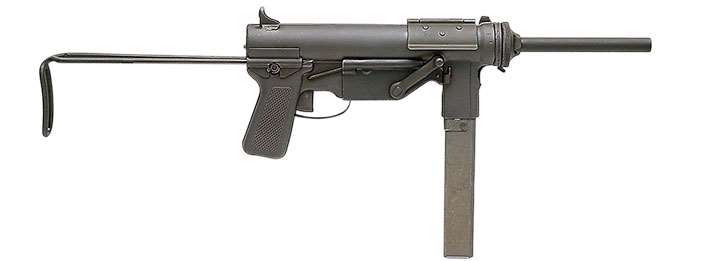
A time pressure began to exert itself as the enemy’s mortar fire started impacting the riverbed where the men had sought cover and concealment. Left with effectively no options, Lt. Col. Cole ordered his men to fix bayonets. Then he drew his M1911A1 pistol, shouted “follow me” and charged the enemy. When bullets dropped a rifleman nearby, Cole holstered his .45, took up the man’s M1 and continued toward the objective. His leadership at the front of the attack proved critical in achieving success. Although reduced in overall numbers, the 3rd Battalion of the Parachute Infantry Regiment reached a farmhouse and held it against repeated enemy counterattacks. Cole, who was later killed during Operation Market Garden, was posthumously awarded the Medal of Honor for leading the attack in Normandy.

The Guns Of Mission Boston
For the Normandy invasion, the 82nd Airborne Division was assigned a mission codenamed “Boston” that would involve the insertion of 6,420 soldiers by parachute and glider into the area near a town named Ste.-Mère-Église. In the pre-dawn darkness of D-Day, the division’s paratroopers jumped into a chaos of misdrops and confusion. Although broadly scattered across the countryside, they assembled the best they could and moved toward their objectives. From the very start of the invasion, the 82nd Airborne Division was heavily engaged with enemy forces, primarily in the area between Ste.-Mère-Église and the Merderet River crossing at La Fière. By D+2 (June 8), the division was in a tenuous position: With the German 91st Division swarming the hedgerows throughout the area, a stalemate had descended across the battlefield. American forces were holding the east bank of the river at La Fière, and the Germans were holding the west bank at the settlement of Cauqigny. But the tactical situation for the 82nd Airborne was made all the more complicated by the fact that two pockets of paratroopers were trapped on the German side of the Merderet, and they could be overrun at any time. In the interest of cracking the impasse and relieving the two surrounded pockets, it was decided that the 1st Battalion, 325th Glider Infantry Regiment would cross the inundated area of the Merderet using a submerged stone road in a flanking maneuver that, it was hoped, would drive the Germans out of Cauquigny. The 325th had come in by glider beginning at 7 a.m. on D+1 (June 7) and had not by that point been committed to heavy action.
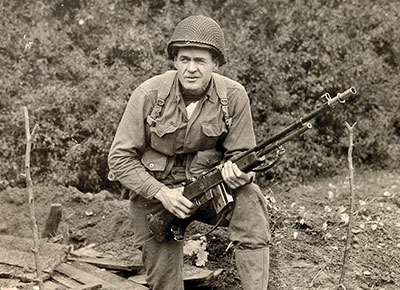
That night, the battalion successfully negotiated the swollen river crossing and, during the pre-dawn hours of June 9th, engaged in a brief exchange of gunfire with Germans at the “Gray Chateau”—a stone manor house dominating the area. A small detachment from the battalion remained behind to neutralize the German force in the chateau while the rest of the battalion continued on, although much delayed by what had happened. Thereafter, the glider infantrymen linked up with one of the groups of surrounded paratroopers and prepared to assault Cauquigny at daybreak. But the push toward Cauquigny ran into problems from the start. One column of troops became disorganized in the darkness, fragmented, and could not join the attack. Although lacking this additional firepower, the men of 1st/325th nevertheless began their assault before first light. Moving south, the battalion at first advanced steadily toward the north side of Cauquigny against sporadic resistance, but as the sun began to rise, the German defenders quickly organized themselves.

The counterattack that followed overwhelmed the inexperienced American glider infantrymen by sheer numbers. German infantrymen swarmed out of the hedgerows around Cauquigny and smashed into the men of 1st/325th. The numerically superior German force quickly pushed them back with torrents of small arms fire from Kar. 98k rifles and MP40 sub-machine guns. In addition to that, concentrated automatic weapons fire from MG42s was directed at the glider infantrymen, and in the face of that kind of firepower the men of the 1st Battalion/325th could not maintain the momentum of the advance. The weight of the German counterattack was so great that the battalion faced certain annihilation. For that reason, the 1st/325th began a tactical withdrawal: pulling back to avoid disaster.
The withdrawal put one squad from the 325th’s C Company in a particularly disadvantaged position. This squad had penetrated an outer perimeter of defending riflemen and machine guns during the first phase of the assault, and was still moving to outflank Cauquigny when the German counterattack struck. The direct result of its far-forward position was that this squad was cut off as the rest of his company fell back to the north. Pinned down, the isolated squad of glidermen sought cover in a shallow ditch 1,300 ft. southwest of Cauquigny. Hostile fire was being directed at them by rifles to the left in the direction of Cauquigny, and from a machine gun in a farm compound 500 ft. to their front. Although the men were temporarily safe from that machine gun, the position in the ditch was far from perfect because they could not move. Their only hope was to fall straight back to the north without delay, but there was one complicating factor that limited their options and interfered with that move, and it was a major one—the hedgerows. In order for the squad to pull back to a safer position, each man would have to filter through a break in the hedgerow, cross a road and then pass through another break in another hedgerow. It was obvious to the men of the squad that, because the Germans had so many troops and weapons in the area, any such movement would be greeted by a swarm of bullets. The situation had become absolutely critical for the small band of glider infantry.
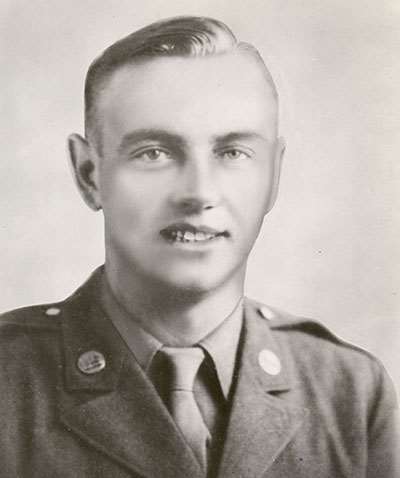
Private First Class Charles N. DeGlopper was one of the men in that squad. A 23-year-old native of Grand Island, N.Y., DeGlopper was big: 6', 6" tall, 240 lbs., with size 13 feet. He had the perfect bulky and powerful stature for hefting the considerable weight of the gun he carried: the nearly 20-lb. M1918A2 Browning Automatic Rifle. Where such an arm would have exhausted a soldier of slighter build, DeGlopper could carry the BAR with relative ease. The only problem was that his size also made him an easy target.
Detecting the danger associated with making a dash for the break in the hedgerow, PFC DeGlopper volunteered to support the withdrawal of the squad with fire from his BAR. He obviously reached the sober realization that the only way his comrades stood a chance was if someone were to draw the enemy’s fire while they made their escape. Unhesitatingly assuming that responsibility, DeGlopper shouted to the others to go and that he would cover them. After that he went to work. “Scorning a concentration of enemy automatic weapons and rifle fire, he walked from the ditch onto the road in full view of the Germans, and sprayed the hostile positions with assault fire.”
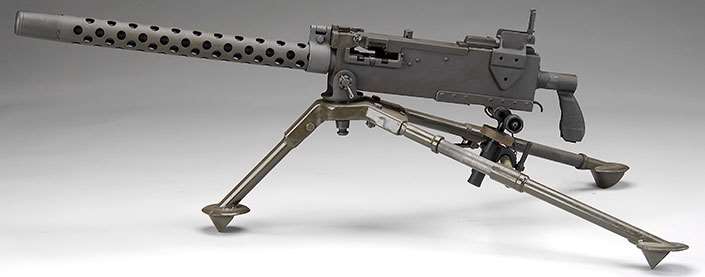
Shouldering his BAR in the open, the big 23-year-old instantly attracted the enemy’s attention. German fire was directed at DeGlopper from several different sources, and within moments, he was hit. Ignoring his wound, he remained on his feet and continued firing at the enemy. Then, DeGlopper was hit by German bullets again and began to stumble. Although he dropped to one knee, he steadied himself and found strength enough to load a fresh 20-round magazine into his BAR, and then level it at the enemy one last time. Weakened by his grievous wounds, he continued to fire burst after burst at the Germans while the men of his squad fell back through the break in the hedgerow and across the road. While still kneeling in the middle of the road, a burst of concentrated gunfire finally killed DeGlopper outright. By drawing the enemy’s fire, he had saved the lives of all of the men of his squad. In the spot where he made his stand, his comrades later found the ground “strewn” with dead Germans. DeGlopper was posthumously awarded the Medal of Honor for what he did that morning at Cauquigny.
Just a few hours later, another 82nd Airborne Division paratrooper met a similar destiny in the hedgerows near Cauquigny. His name was Pvt. Joe Gandara, an M1919A4 machine gunner with D Company, 507th Parachute Infantry Regiment. His Medal of Honor action took place a few hundred yards away from the spot where Charles DeGlopper sacrificed his life earlier in the day. Gandara’s citation reads much like DeGlopper’s:
“When his detachment came under devastating enemy fire from a strong German force, pinning the men to the ground for a period of four hours, Private Gandara advanced voluntarily and alone toward the enemy position. Firing his machine gun from a carrying position as he moved forward, he destroyed three hostile machine guns before he was fatally wounded.”
Although DeGlopper and Gandara were the only 82nd Airborne soldiers to receive the Medal of Honor in Normandy, countless other acts of bravery characterized the way that the men of the division fought there. Those men did so with all of the other American firearms available in mid-1944. The M1911A1 .45-cal. pistol was there, but the M1917 .45-cal. revolver was there, too (see p. 36). In the 325th Glider Infantry Regiment, the M1917A1 water-cooled heavy machine gun remained in service alongside the M1919A4 air-cooled machine gun.
The Thompson submachine gun was represented mostly by the M1A1 variant, but a few long-serving 82nd Airborne troopers were still armed with the M1928A1—some even equipped with the vertical fore-grip. The M3 “grease gun” was also there, as was the M1A1 carbine with its folding stock that provided an ideal compactness for sky soldiers. In fact, in a few cases men carried carbines modified to fire full-automatic. In a post-war memoir, 1st/Sgt. Barney Q. Hopkins of D Company, 507th Parachute Infantry Regiment remembered:
“We were quite well equipped for combat ... . In my case, I had a .30-caliber M1A1 carbine, which the trigger mechanism had been converted and was made into a full automatic carbine, capable of about 700 rounds per minute. There were only about 30 such automatic carbines in the Regiment. My automatic carbine served me well in many cases. These carbines were converted in a machine shop in Nottingham, England; this would be a year or two before the Army came out with the full automatic carbine ... .”
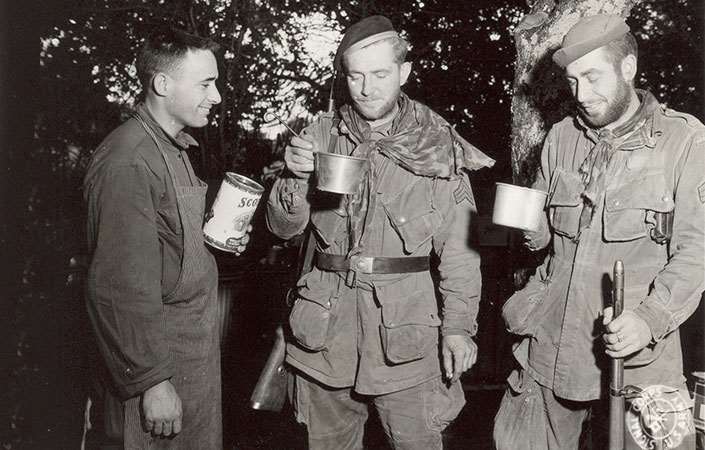
The incomparable M1 Garand was the infantry rifle carried by most of the men who served the 82nd Airborne in France during the summer of 1944. Even the assistant division commander, Maj. Gen. James M. Gavin, jumped on D-Day with the 9-lb., 8-oz., rifle. But some of the division’s paratroopers ended up using the enemy’s rifles in Normandy. On July 15, 1944, Sgt. Robert D. Henderson of Seattle, Wash., and Sgt. Havrill W. Lazenby of Nashville, Tenn., walked into friendly lines after evading the enemy for more than a month. Both men were NCOs in the 505th Parachute Infantry Regiment and, when they finally reached the safety of a U.S. unit, they were armed with a Kar. 98k Mauser and a Gew. 41(W). After being captured on June 6, 1944, Henderson and Lazenby managed to escape during a night march. They then spent the next 37 days living off of raw potatoes. What these two men did speaks to the level of skill and dedication that U.S. paratroopers brought to the D-Day battlefield, and it speaks to the value of being familiar with the enemy’s guns.













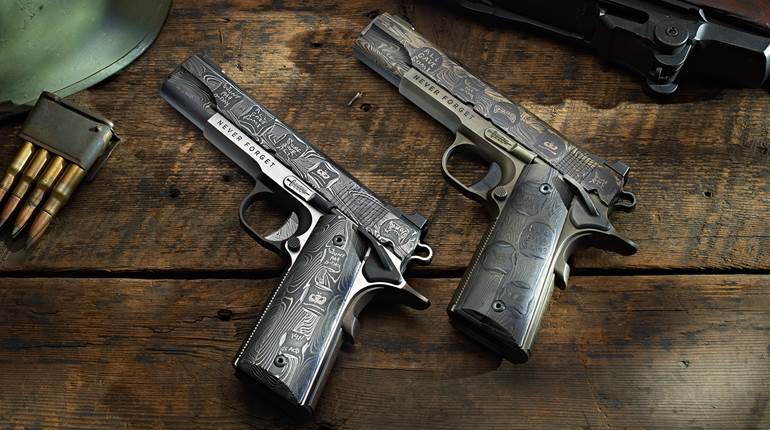
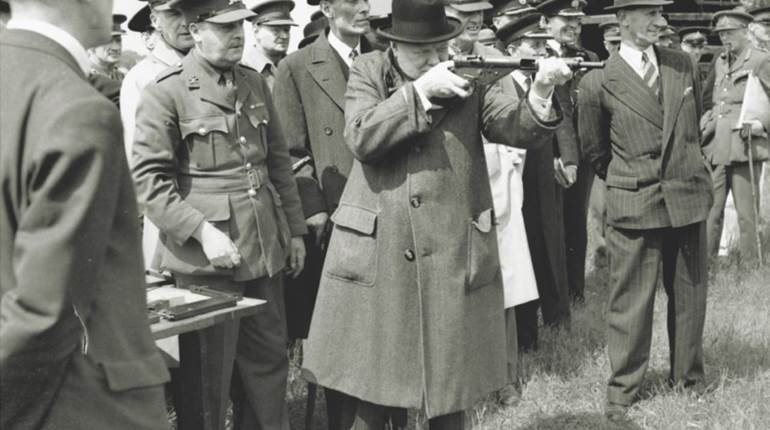
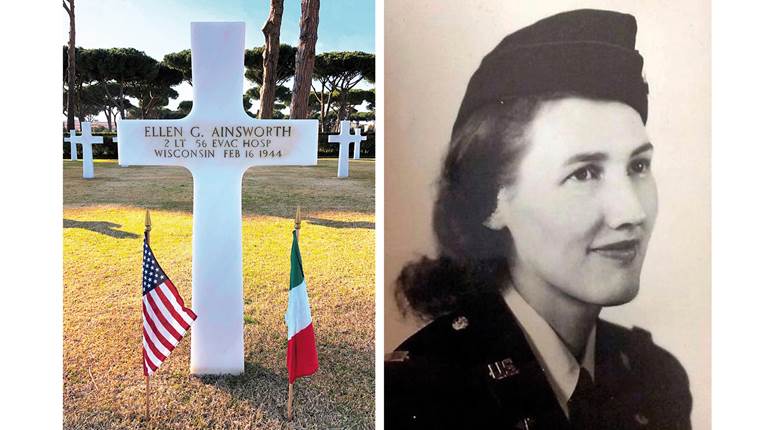

![Winchester Comm[94]](/media/1mleusmd/winchester-comm-94.jpg?anchor=center&mode=crop&width=770&height=430&rnd=134090756537800000&quality=60)
![Winchester Comm[94]](/media/1mleusmd/winchester-comm-94.jpg?anchor=center&mode=crop&width=150&height=150&rnd=134090756537800000&quality=60)

